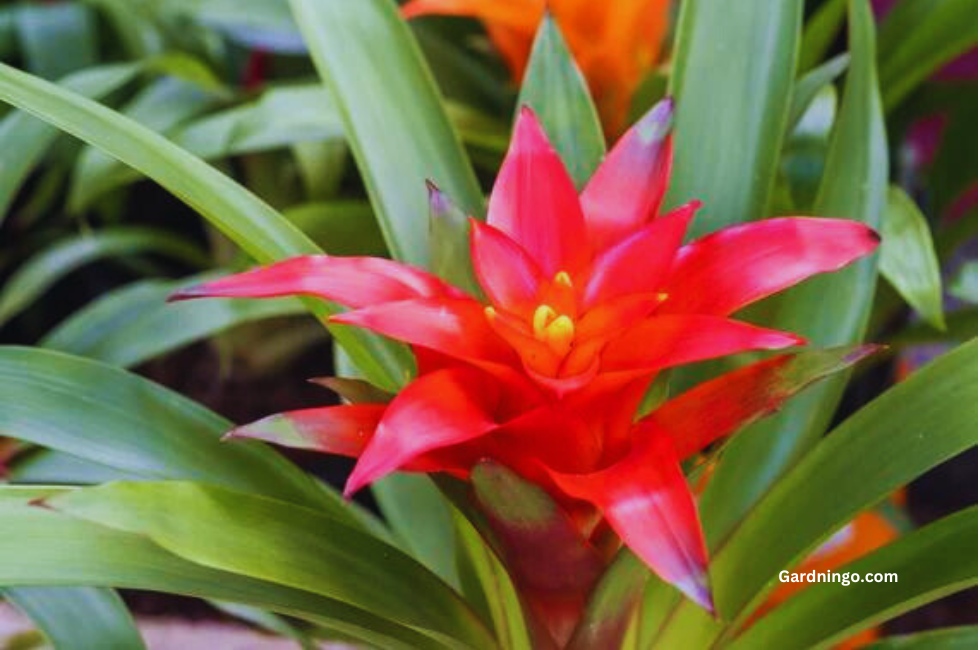Introduction
Bromeliaceae, often referred to as Bromeliads, are a remarkable family of plants that captivate the hearts of botany enthusiasts and casual gardeners alike. With their exotic appearance and easy-care nature, they have become popular choices for adding a touch of the tropics to homes and gardens. In this article, we delve into the world of Bromeliaceae, covering everything from their diverse species to care tips and even some FAQs.
Bromeliaceae: A Closer Look
Bromeliaceae is a family of flowering plants known for their distinct characteristics. These mesmerizing plants are native to the Americas and can be found in a wide range of environments.
Bromeliaceae: The Basics
Bromeliaceae includes over 3,000 known species, making it one of the most diverse families of plants. They come in various shapes, sizes, and colors, ensuring there’s a Bromeliad for everyone.
Bromeliaceae Features
Bromeliaceae boasts some unique features. Most notably, they have a rosette of leaves that collects water at the base, allowing them to thrive in diverse ecosystems. This adaptation helps them survive in both rainforests and arid deserts.
Diversity in Bromeliaceae
Bromeliaceae is a versatile family, with subfamilies like Pitcairnioideae and Tillandsioideae, each having its own set of unique features. These subfamilies demonstrate the diverse nature of Bromeliads.
Growing and Caring for Bromeliaceae
Bromeliaceae’s enchanting appearance isn’t the only reason they’re beloved. They are also relatively low-maintenance plants, perfect for both beginners and experienced gardeners.
Light and Temperature
Bromeliads thrive in indirect light, making them suitable for indoor settings. Ensure they get bright, filtered sunlight. They are also adaptable to a range of temperatures but prefer warmth and humidity.
Watering Bromeliads
The unique water-collecting rosette at the base of Bromeliaceae leaves doesn’t mean they require a lot of water. In fact, they prefer it on the drier side. Water directly into the rosette and change it every few weeks.
Soil and Potting
A well-draining potting mix is crucial for Bromeliaceae. They do best in a mix of peat moss, perlite, and pine bark. Repot them when you notice overcrowding or when they outgrow their containers.
Bromeliaceae Propagation
You can propagate Bromeliaceae through offsets or seeds. Wait until offsets have grown a bit before separating them. Seeds require a bit more patience but can be a rewarding endeavor.
Frequently Asked Questions (FAQs)
Are Bromeliads suitable for beginners?
Absolutely! Bromeliads are known for their resilience and adaptability, making them perfect for those new to plant care.
How often should I water my Bromeliad?
Watering every two to three weeks, directly into the rosette, is typically sufficient. Be sure to let the rosette dry out between waterings.
Do Bromeliads need fertilizer?
While Bromeliads can do well without regular fertilization, you can apply a diluted, balanced liquid fertilizer during the growing season for a little extra boost.
Can I keep Bromeliads indoors?
Yes, Bromeliads thrive as indoor plants. They prefer bright, indirect light, making them an excellent choice for indoor spaces.
Do Bromeliads flower annually?
Bromeliads usually flower once in their lifetime. However, their unique and long-lasting bracts will continue to add color and beauty to your surroundings.
How do I deal with pests on Bromeliads?
Bromeliads are relatively pest-resistant, but occasionally, you may encounter issues like mealybugs. Simply remove them with a cotton swab dipped in rubbing alcohol.
Conclusion
Bromeliaceae, with its stunning diversity and low-maintenance care, is truly a gift to plant lovers. Whether you’re a seasoned gardener or just starting your journey, these plants are sure to add a touch of the tropics to your life. With a little care and patience, you can enjoy their unique beauty for years to come.
The Bromeliaceae family stands as a remarkable and diverse group of plants that have captivated botanists, horticulturists, and nature enthusiasts alike. With their unique adaptations, striking aesthetics, and ecological significance in various ecosystems, these plants have not only added beauty to our gardens but have also enriched our understanding of plant evolution and survival strategies. Whether serving as ornamental specimens or as integral components of tropical habitats, Bromeliaceae continue to hold a special place in the world of botany, highlighting the extraordinary wonders of the plant kingdom and the importance of conserving our natural biodiversity.


